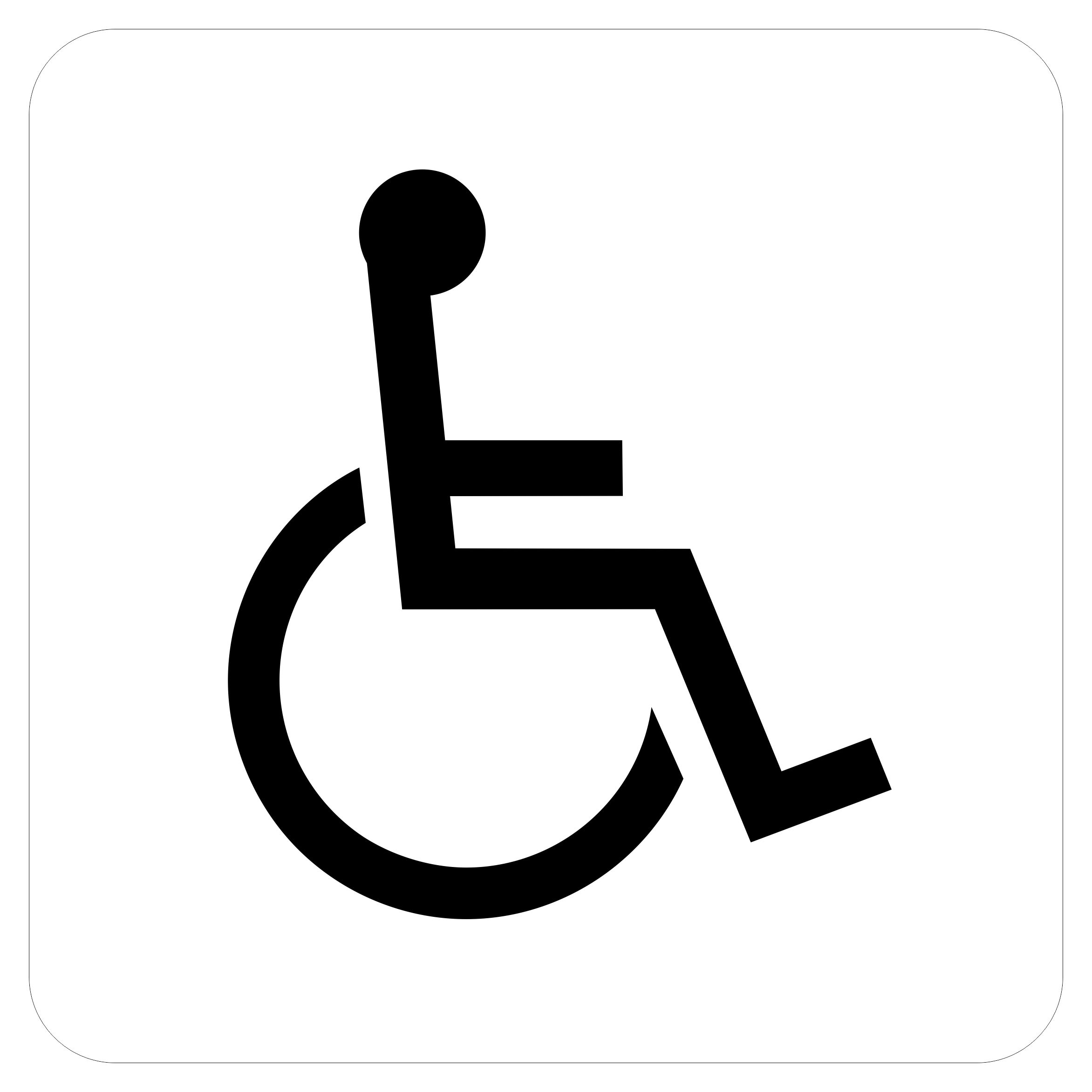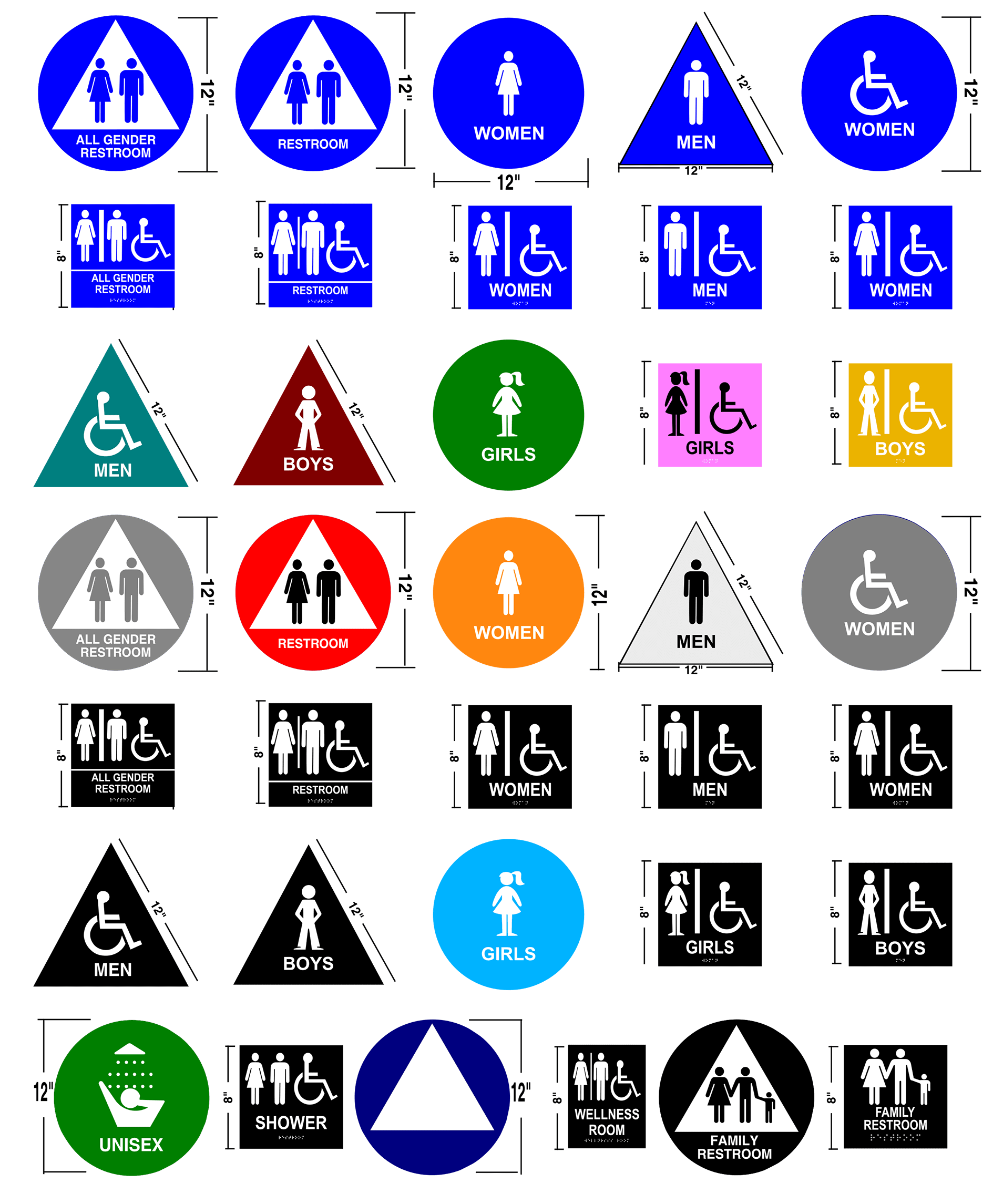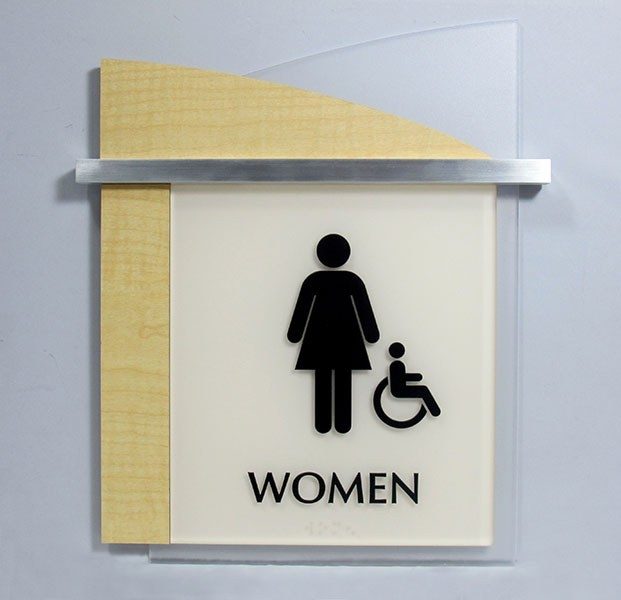The Function of ADA Signs in Abiding By Access Standards
The Function of ADA Signs in Abiding By Access Standards
Blog Article
Discovering the Secret Attributes of ADA Indicators for Enhanced Ease Of Access
In the realm of availability, ADA indications work as quiet yet powerful allies, making sure that areas are inclusive and accessible for individuals with disabilities. By integrating Braille and responsive components, these indications break barriers for the visually impaired, while high-contrast color pattern and legible typefaces deal with diverse visual demands. In addition, their critical positioning is not arbitrary yet instead a calculated effort to promote smooth navigation. Beyond these attributes lies a much deeper narrative concerning the development of inclusivity and the ongoing dedication to producing fair rooms. What much more could these signs represent in our search of global ease of access?
Relevance of ADA Conformity
Ensuring compliance with the Americans with Disabilities Act (ADA) is essential for promoting inclusivity and equivalent accessibility in public spaces and work environments. The ADA, established in 1990, mandates that all public facilities, companies, and transportation services fit people with handicaps, guaranteeing they enjoy the exact same legal rights and opportunities as others. Compliance with ADA requirements not only meets legal responsibilities however additionally boosts a company's credibility by demonstrating its dedication to variety and inclusivity.
One of the key aspects of ADA conformity is the implementation of available signage. ADA indicators are created to guarantee that individuals with handicaps can conveniently navigate through structures and areas.
Additionally, adhering to ADA laws can alleviate the danger of lawful effects and potential penalties. Organizations that fall short to follow ADA standards may encounter fines or suits, which can be both monetarily difficult and damaging to their public image. Hence, ADA compliance is important to fostering an equitable environment for everybody.
Braille and Tactile Elements
The incorporation of Braille and tactile aspects into ADA signage symbolizes the concepts of access and inclusivity. It is usually placed below the equivalent text on signage to ensure that individuals can access the information without visual assistance.
Tactile aspects extend past Braille and consist of increased symbols and characters. These parts are made to be discernible by touch, permitting individuals to identify area numbers, toilets, leaves, and other important areas. The ADA sets certain standards concerning the size, spacing, and positioning of these responsive elements to optimize readability and ensure uniformity throughout various settings.

High-Contrast Color Design
High-contrast shade plans play a critical duty in enhancing the exposure and readability of ADA signage for people with visual disabilities. These schemes are important as they make best use of the difference in light reflectance between text and background, making certain that indications are conveniently noticeable, also from a distance. The Americans with Disabilities Act (ADA) mandates making use of certain color contrasts to accommodate those with restricted vision, making it a vital facet of compliance.
The effectiveness of high-contrast colors lies in their ability to attract attention in numerous lights conditions, including poorly lit environments and locations with glare. Commonly, dark message on a light history or light message on a dark background is used to accomplish ideal contrast. Black text on a yellow or white background gives a stark visual distinction that assists in fast recognition and comprehension.

Legible Fonts and Text Size
When considering the layout of ADA signs, the option of clear font styles and appropriate message dimension can not be overstated. The Americans with Disabilities Act (ADA) mandates that font styles must be sans-serif and not italic, oblique, manuscript, extremely ornamental, or of unusual kind.
According to ADA guidelines, the minimal text elevation should be 5/8 inch, and it needs to enhance proportionally with seeing distance. Uniformity in text dimension contributes to a natural visual experience, helping individuals in browsing environments effectively.
Furthermore, spacing in between letters and lines is important to legibility. Appropriate spacing avoids personalities from appearing crowded, improving readability. By sticking to these standards, developers can considerably boost ease of access, making certain that signage serves its desired purpose for all individuals, no matter of their visual Clicking Here abilities.
Reliable Positioning Techniques
Strategic positioning of ADA signs is vital for making best use of access and making certain conformity with legal criteria. ADA guidelines specify that indicators must be installed at a height in between 48 to 60 inches from the ground to guarantee they are within the line of sight for both standing and seated people.
In addition, indications must be put adjacent to the lock side of doors to allow very easy identification prior to entrance. Uniformity in indication redirected here placement throughout a center enhances predictability, minimizing confusion and boosting overall individual experience.

Conclusion
ADA indications play a crucial role in promoting availability by incorporating features that attend to here the demands of people with impairments. Integrating Braille and responsive elements guarantees important information comes to the aesthetically damaged, while high-contrast shade systems and legible sans-serif font styles improve presence throughout numerous lighting conditions. Effective placement methods, such as ideal placing elevations and tactical locations, even more assist in navigating. These aspects jointly cultivate a comprehensive setting, emphasizing the importance of ADA conformity in ensuring equal access for all.
In the world of ease of access, ADA indications serve as silent yet powerful allies, making sure that areas are navigable and inclusive for individuals with handicaps. The ADA, established in 1990, mandates that all public facilities, employers, and transport services accommodate people with impairments, ensuring they appreciate the exact same rights and possibilities as others. ADA Signs. ADA indicators are developed to ensure that people with impairments can easily browse through structures and areas. ADA guidelines state that signs need to be installed at an elevation in between 48 to 60 inches from the ground to ensure they are within the line of view for both standing and seated individuals.ADA indicators play an important duty in promoting access by integrating attributes that attend to the demands of individuals with handicaps
Report this page